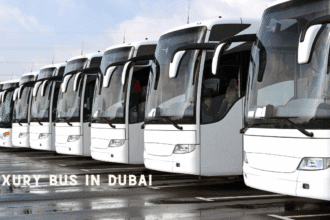Just imagine it: you’re driving along the rolling hills in the Cotswolds, where the sunbeams golden light on ancient stone villages, when suddenly your navigation app loses signal. Or maybe you’re photographing the stunning views at Loch Katrine, in the Scottish Highlands, and you want to share with friends back home, only to find out there is no connectivity at all.
These two scenarios are all too realistic to travelers moving about the many beautiful landscapes of the United Kingdom from the busy streets of London to the wild and beautiful mountains of Scotland.
The UK is one of the best road trip destinations in the world and has an impressive variety of travel landscapes and experiences. However, staying connected while managing travel itineraries and navigating this diverse travel infrastructure has significant challenges. You may experience Wi-Fi issues in rural pubs, exorbitant roaming charges through international carriers, and the constant need to connect to your travel navigation app can certainly make for an idyllic trip, but a connectivity nightmare.
Fortunately, that is where eSIM technology comes into play and provides travelers with a scalable, flexible and cost-effective solution in an instant,t wherever you are.
No longer do we need to search for local SIM cards in strange towns or fuss with swapping out physical SIM cards halfway through a journey. The best esim for uk options give you instant connectivity that will flex to meet your needs, whether you are streaming music while cruising through the Yorkshire Dales or video calling family from Edinburgh Castle. We will examine how the right eSIM makes your connected chaos the magnificent adventure of a lifetime on your road trip in the UK.
Why is Connectivity Important for UK Road Trips
The road trips of today expect connectivity with the increased digital needs related to COVID-19; in the UK, this presents both a challenge and an opportunity for connectivity options with its geography. The challenge of ensuring reliable internet access is a necessity for today’s travelers. Understanding why will help explain why traditional connectivity options are ultimately imperfect.
The Trials of Staying Online While Traveling
Rural connectivity is still patchy across much of the UK. While there has been considerable improvement in the infrastructure, many villages in the Lake District or remote areas of Wales have limited coverage from any cell tower, placing travelers in a vulnerable position without the digital tools they depend on to stay connected. When a public Wi-Fi connection is available, it is oftentimes slow, unreliable, and can be trapped behind a password that the busy café owner will not share with a transient tourist.
The second major pain point is the international roaming costs that many of the major carriers provide for overseas data usage. In many cases, the costs can exceed hundreds of dollars within the first week of travel, which is shocking when the cost for cellular service at home is one-fifteenth that rate.
These costs activate the most expensive pain point, connectivity, when it matters the most too; when you are driving a rental car that takes a completely new set of directions, translating all the foreign road signs, or a travel-related emergency that requires communication with somebody about a missed reservation.
Essential Features to Consider in a UK Road Trip eSIM
Selecting the right eSIM for your UK adventure requires understanding which features matter most for road trip scenarios. Not all providers offer the same capabilities, and seemingly small differences can significantly impact your travel experience.
Committed Information Rate
Network coverage dictates in-world performance more so than data allowance or advertised speed. The top eSIM providers for visiting the UK are those that have agreements with more than one large network – usually EE, Vodafone, and Three – and that switch automatically to the best available signal. The multi-network strategy is particularly useful in places where there are gaps in single carriers’ coverage.
Knowing UK geography makes you realize why network diversity is important. The Scottish Highlands, for instance, are places where EE offers superb coverage and Vodafone fares badly, and vice versa. A good service would ideally alternate networks automatically according to signal strengths so that you stay connected consistently, irrespective of what operator controls your exact hotspot.
Flexible Data Plans
Data usage for road trips ranges enormously by driving style, group size, and anticipated usage. Frugal tourists who are only navigating and messaging may go through 1-2GB weekly, whereas content creators posting pictures and video clips could easily exceed 10GB during the same period. The top providers acknowledge such variety by having various plan choices instead of generic solutions.
Data quotas that are used each day suit brief excursions when usage patterns are regular. Weekly or monthly passes are usually better value for longer trips, particularly when data sharing across several devices is enabled. A few eSIM services allow pay-as-you-go usage that reduces waste by not using data that is allocated but not consumed.
Easy Setup and Management
Setup complexity can make or break the eSIM experience, particularly for travelers dealing with jet lag, unfamiliar environments, or time constraints. The best services provide QR code activation that works within minutes of purchase, along with clear instructions that don’t require technical expertise.
Mobile app functionality extends beyond initial setup to include ongoing plan management, usage monitoring, and customer support access. Quality providers offer apps that work offline for basic functions like checking remaining data allowances, ensuring you can monitor usage even in areas with limited connectivity.
Compatibility check for devices avoids purchase surprises later. Not all modern smartphones are eSIM-enabled, and some budget and older devices are not. Reliable operators host updated compatibility lists and offer instructions for checking devices’ ability prior to acquisition.
Stay Safe and Secure
This technology itself enjoys inherent security advantages over traditional physical SIM cards, but tourists need to be aware of best practices to protect their data and privacy. Unlike removable physical SIM cards that can be duplicated and so vulnerable to misuse, and hold encrypted profiles that are virtually impossible to compromise.
Do not use public Wi-Fi networks when you perform sensitive operations such as banking, checking emails, or storing passwords. Public Wi-Fi, as enticing as it may be for saving eSIM data, is not a secure network and exposes personal data to security threats. Utilize eSIM for sensitive operations and save public Wi-Fi for non-critical browsing.
Conclusion
The liberty of the open road should not diminish the ability to stay connected to the world around you. As we have shed light on in this guide, the problems with reliable connectivity for UK road trips have been addressed with recent advances in embedded SIM (eSIM) technology. The move from physical SIM cards to eSIM solutions is more than just another piece of technology. It is a game changer for a traveller’s freedom and ability to control their budget.
Finding the best to suit your needs comes down to understanding your own requirements as a traveler and selecting a provider that meets your connectivity needs, budget and degree of technical comfort. The best eSIM solutions are transparent about their pricing, demonstrate reliable multi-network coverage, understand the potential constraints of UK travel and provide responsive customer service.





